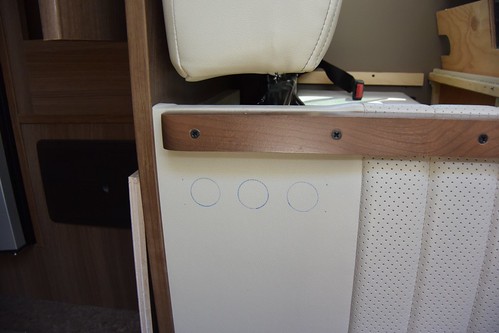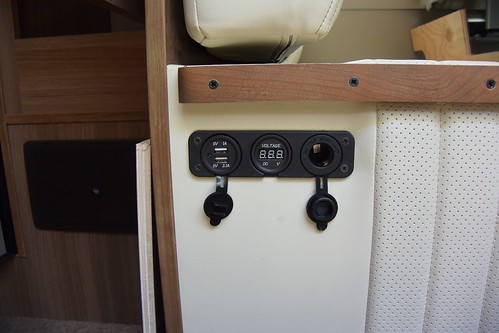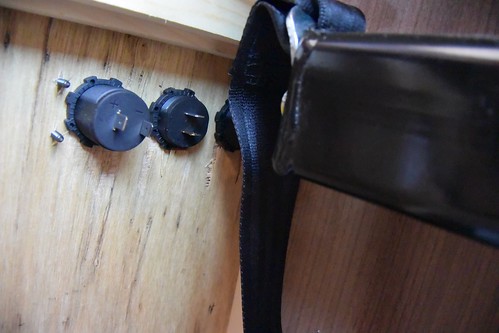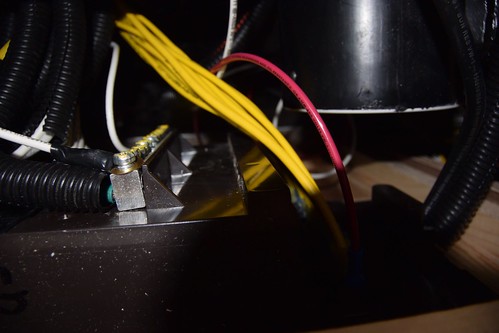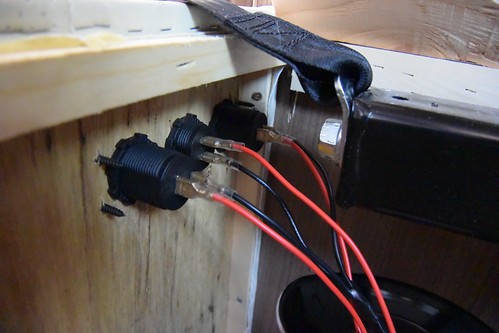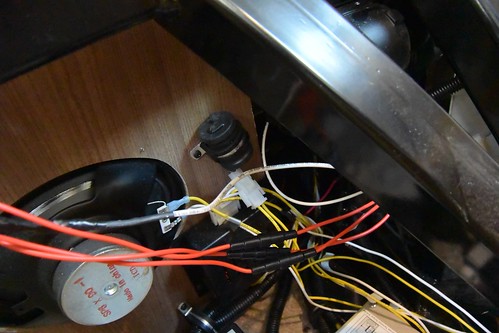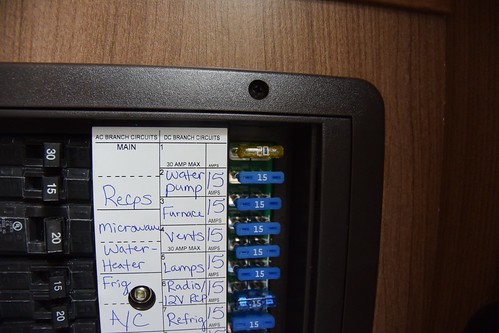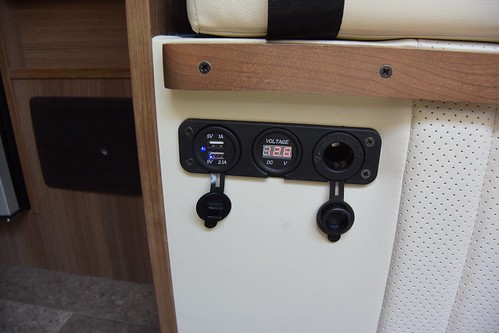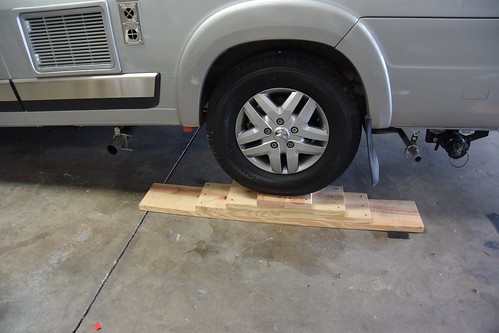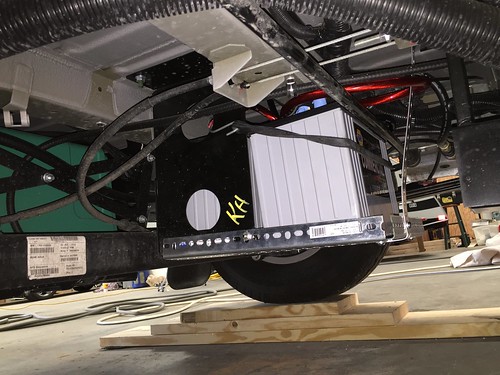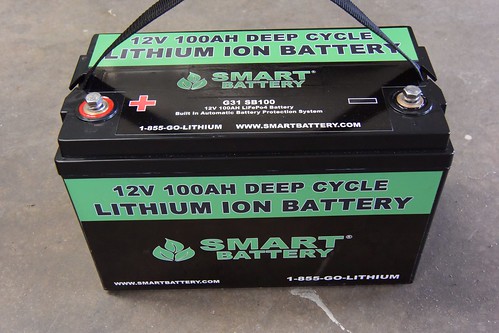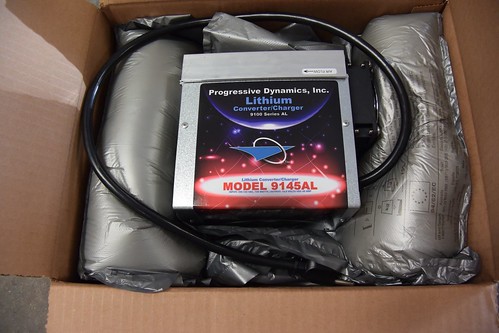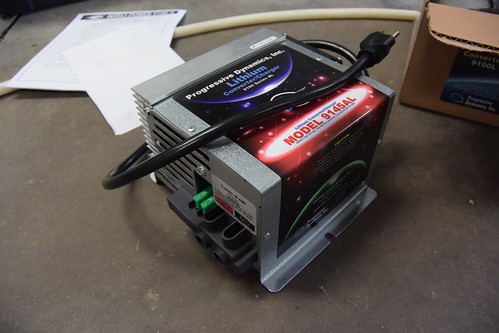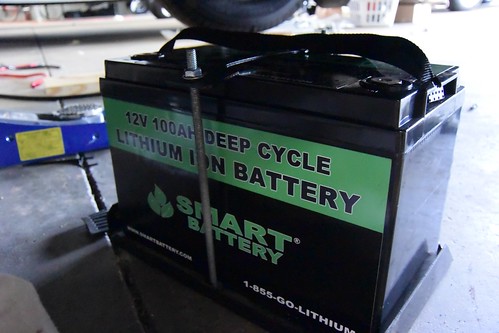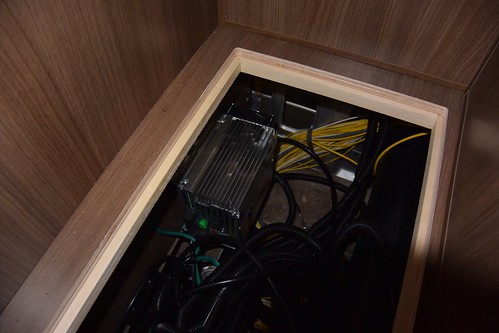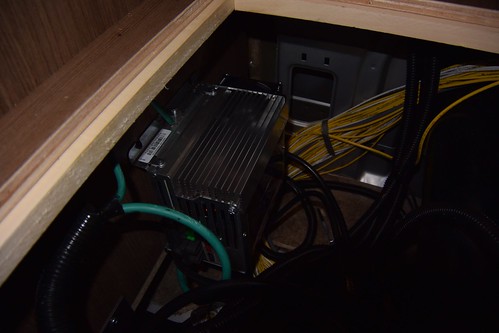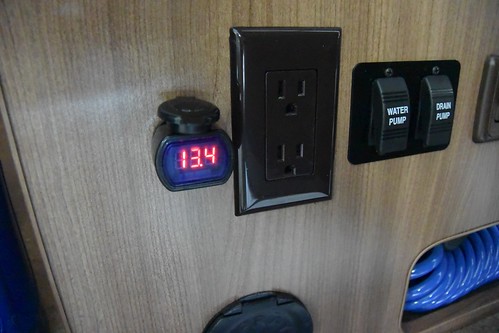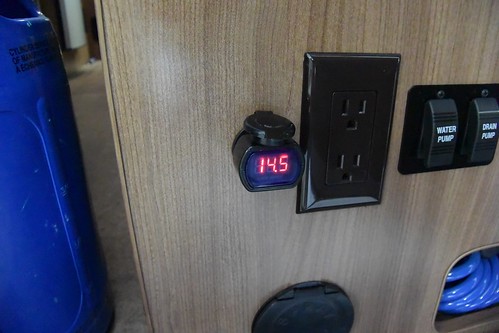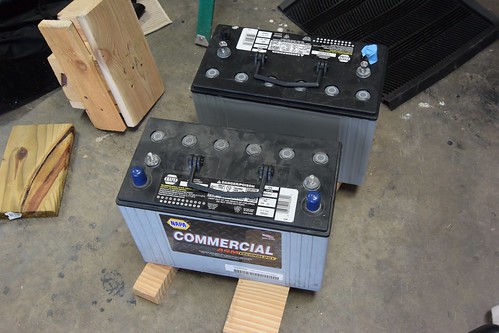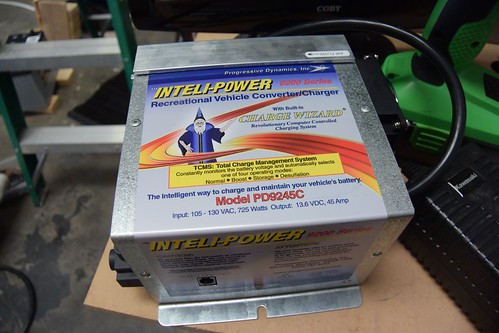I got the idea for this on a forum. My model of Travato doesn't have but one 12v outlet in the house, and no USB's. I was using an adapter that is in the back wall of the van to charge my phone as well as use some accessories like an inflator.
There are USB's in the dash, but they only are active if the key is in the run position. You can also hardwire something to the chassis battery, but that has it's own downsides.
So I got this device on Amazon. It has a cigarette lighter port, a digital voltmeter and a 2 port USB (high and low amp):
http://www.amazon.com/gp/product/B00XN1DAP0?psc=1&redirect=true&ref_=oh_aui_detailpage_o01_s00
I wanted the outlets near the front of the van. It would also be nice to see the battery voltage whilst standing outside the van. So the side of the dinette seat would be ideal.
First, you mark off the vinyl. An ink pen will do:
Then carefully score and cut back the vinyl. You don't want this cut any more than necessary - it also can snag on the hole saw. The cutting is a two part process - first you cut out a bit of the circles so you can start the hole saw ( if you are familiar with these, they have a drill bit in the center surrounded by a round cutting blade) - this positions your holes so their alignment is perfect. Then cut the vinyl out as one strip to expose the holes. Then using your hole saw, drill out the holes.
Place the faceplate over the cuts, and install the individual items - they have little backing flanges on the backside. Then with a pilot bit, drill out the screw holes and then drive in your screws:
The backside: Be careful drilling the holes - this is only paneling, so just use a little pressure on your drill.
Now for the wiring. The distribution panel has an open circuit for an addition 12v item. So I soldered a wiring harness together to join the 3 pos and neg wires to a single 12 gauge wires to attach to the back of the distribution panel. The positive side (red) needed a blade connector, the neg side (white) I put on a ring connector. Pop on the positive and screw down the negative.
The wires route to a gap in the cabinetry between the dinette and under the closet:
I'll zip tie these up later.
All that's left is to add a fuse to the panel (20 amp at the top) and make it hot. My individual leads also have their own fuses, so I think the system has ample protection.
Looks like it works!
Sunday, July 26, 2015
Saturday, July 25, 2015
Smart Battery Follow-up
I thought it would be fun to hammer my battery today. I've got everything 12v turned on - refer on 12v, the tv, the stereo, the fantastic fan on high and every light on. We'll see how long she goes. I have the autostart on the generator set to come on at 12.1v - that should be deep I'd think. Any guesses how long to expect?
At 4 hours, I was at 12.1 volts and the generator started. From the chart on Smart Battery's site, that should be essentially empty, but I have no real way of telling. Interestingly, the gauge on my Onan remote was reading 12.1 volts, but the gauge I have in the cabin was reading 11.8. I think I can attribute that to the 12v pickup on the generator is a straight line to the battery, whereas the 12v outlet in the cabin has the block and fuse panel and wiring between it.
Anyways, I have some observations on charging. Firstly, the charger is running flat out - both fans spinning. Even though the spec is the same as my old charger (725 watts/45 amp) it must be putting out more of that because I popped my GFCI in the garage (running on a 15 amp drop cord). Could just be a coincidence, but the only time it's done that was with the AC and other things running and a long drop cord.
Secondly, the voltage showing on the gauge is not the same as I was seeing at the shop. When I first installed the battery, it was reading 14.5 volts. I now suspect that the battery was delivered fully charged and not the 30-40% charge I was led to believe. Now, with the depleted battery, the voltage in the cabin started at 13.2 and is rising. After 2 hours it's bouncing 13.8 to 14.0. So instead of the constant 14.5 this charger claims to put out, it either ramps up until it peaks when the battery is full, or it's just the method of how we are measuring the voltage, I don't know.
As I said before, I started this test with a hot refrigerator - above 80 degrees inside (it's quite hot here). So I suspect that it was needing 15 or more amps trying to cool down. It did get close to desired temps inside in the 4 hours, which was better than I was expecting. My fans, lights, tv's etc, must be using 4 or 5 amps. 1 light in the bathroom is incandescent, so it's probably 1 amp by itself. Same for the 2 fans. The TV and stereo are negligible. The CO detector is probably 1 amp. I have no idea on the LP system - the manual says to engage the cutoff switch when not in use to avoid draining the battery, so it must have some parasitic load.
I've been on the charger for almost 3 hours. I really expected to be fully charged by now, but I guess not. I'll report back when the voltage is back at 14.5. I don't think it needs to sit for any length of time when it reaches that point.
Even though the current voltage is reading 14.0 volts with the charger running, if you shut it off, the voltage reads 13.4 volts, which would indicate a full battery. But you have no way of knowing if it's truly full. Good thing with lithium is that it doesn't really matter - it is just fine to be partially charged.
OK, at 3.5 hours, the voltage is reading 14.5 volts. The charger is cool and the fans not blowing. So now I'm pretty sure that the battery is now full. But also, it doesn't appear it is putting anything into the battery, and could probably be just left online.
It just strikes me that it shouldn't work this way. But the charger may be putting out a constant voltage to the battery, but the 12v system in the coach is not reading it that way.
Update 7/26/15:
Today I re-ran the test with a few tweaks.
First, I left the RV plugged in over-nite. The refrigerator was cold to start with. Started at 13.4 volts.
Turned everything on again. I suspect the refer is now drawing less. Not a whole lot though.
I adjusted the setting for the Onan autostart to 11.9 volts.
I heard it come on after 5 hours. So that's an additional hour run time. I turned off the generator and started the engine.
After an hour of idling, if you shut down the engine, the system shows 13.2 volts. That's a bit short of the full charge 13.4. After two hours, it was reading 13.3, so I shut it off. Close enough.
Not sure if driving the van would do any better.
At 4 hours, I was at 12.1 volts and the generator started. From the chart on Smart Battery's site, that should be essentially empty, but I have no real way of telling. Interestingly, the gauge on my Onan remote was reading 12.1 volts, but the gauge I have in the cabin was reading 11.8. I think I can attribute that to the 12v pickup on the generator is a straight line to the battery, whereas the 12v outlet in the cabin has the block and fuse panel and wiring between it.
Anyways, I have some observations on charging. Firstly, the charger is running flat out - both fans spinning. Even though the spec is the same as my old charger (725 watts/45 amp) it must be putting out more of that because I popped my GFCI in the garage (running on a 15 amp drop cord). Could just be a coincidence, but the only time it's done that was with the AC and other things running and a long drop cord.
Secondly, the voltage showing on the gauge is not the same as I was seeing at the shop. When I first installed the battery, it was reading 14.5 volts. I now suspect that the battery was delivered fully charged and not the 30-40% charge I was led to believe. Now, with the depleted battery, the voltage in the cabin started at 13.2 and is rising. After 2 hours it's bouncing 13.8 to 14.0. So instead of the constant 14.5 this charger claims to put out, it either ramps up until it peaks when the battery is full, or it's just the method of how we are measuring the voltage, I don't know.
As I said before, I started this test with a hot refrigerator - above 80 degrees inside (it's quite hot here). So I suspect that it was needing 15 or more amps trying to cool down. It did get close to desired temps inside in the 4 hours, which was better than I was expecting. My fans, lights, tv's etc, must be using 4 or 5 amps. 1 light in the bathroom is incandescent, so it's probably 1 amp by itself. Same for the 2 fans. The TV and stereo are negligible. The CO detector is probably 1 amp. I have no idea on the LP system - the manual says to engage the cutoff switch when not in use to avoid draining the battery, so it must have some parasitic load.
I've been on the charger for almost 3 hours. I really expected to be fully charged by now, but I guess not. I'll report back when the voltage is back at 14.5. I don't think it needs to sit for any length of time when it reaches that point.
Even though the current voltage is reading 14.0 volts with the charger running, if you shut it off, the voltage reads 13.4 volts, which would indicate a full battery. But you have no way of knowing if it's truly full. Good thing with lithium is that it doesn't really matter - it is just fine to be partially charged.
OK, at 3.5 hours, the voltage is reading 14.5 volts. The charger is cool and the fans not blowing. So now I'm pretty sure that the battery is now full. But also, it doesn't appear it is putting anything into the battery, and could probably be just left online.
It just strikes me that it shouldn't work this way. But the charger may be putting out a constant voltage to the battery, but the 12v system in the coach is not reading it that way.
Update 7/26/15:
Today I re-ran the test with a few tweaks.
First, I left the RV plugged in over-nite. The refrigerator was cold to start with. Started at 13.4 volts.
Turned everything on again. I suspect the refer is now drawing less. Not a whole lot though.
I adjusted the setting for the Onan autostart to 11.9 volts.
I heard it come on after 5 hours. So that's an additional hour run time. I turned off the generator and started the engine.
After an hour of idling, if you shut down the engine, the system shows 13.2 volts. That's a bit short of the full charge 13.4. After two hours, it was reading 13.3, so I shut it off. Close enough.
Not sure if driving the van would do any better.
Saturday, July 11, 2015
Smart Battery Lithium Ion Battery Project
ATTENTION READERS! I NO LONGER ENDORSE OR RECOMMEND THE SMART BATTERY. YOU HAVE MOST LIKELY COME HERE VIA A LINK FROM SMART BATTERY'S WEBSITE. I HAVE NEVER AGREED FOR THEM TO LINK TO THIS BLOG AND ADVISE THEM TO BREAK THE LINK. I'M NOW RECOMMENDING STARK POWER'S BATTERY AS A MORE ECONOMICAL AND MORE FULLY FEATURED CHOICE. CHECK THEM OUT AT www.starkpower.com
My Travato came stock with one Group 31 AGM battery from NAPA. This is a good battery, 110 AH. I could make it a couple days running lights, fantastic vent fan, entertainment systems and the water pump. Overnite with the furnace blower would be dicey.
Wanting more capacity, I did a project adding a second battery of the same type. I scabbed onto the existing battery frame and mounted another battery under my van. I wasn't exactly thrilled with the DIY look of this installation. It would work just fine - I doubled my AH capacity, but I was having anxiety about how this was mounted and found myself constantly checking under the van to see if the batteries were OK. So I started looking for another solution.
I've been talking about and researching putting LiFePO4 batteries in my Travato for some time. The more I looked into this, the more frustrated I became in finding information that agreed - mostly there are divergent opinions on usage, charging, etc. There is also a plethora of equipment to manage and charge these batteries. I like a simple approach. I wanted to not only reduce weight and maintain the same about of capacity that I had with my 2 AGM's. Also key to my thinking was to do something that was completely reversible if it didn't work out.
I started out thinking I'd install 2 or 3 batteries and really up my capacity. Or maybe one really big battery - an 8D size 300 AH unit. Then I could get a big inverter and run appliances like the water heater and the microwave. Well, if you can swallow the cost of all these batteries, there is definitely downsides. Namely you have major wiring rework to do and drilling holes in the van to pass these wires thru. The existing wiring from the converter was 6 AWG. The wiring from the alternator is 1 AWG. These are respectable sizes for a single battery, but inadequate for huge loads needed for multiple batteries. If I went down this road, there was major work, major cost and could still be a disaster.
So all that said, I started looking closely at the Smart Battery brand of "drop in" type batteries. These batteries come with a battery management system, or BMS, inside the casing. What this does is protect the battery from over and under voltage, so it can't be damaged from running it down completely, as well as an over-zealous charger. You can read all about these batteries at: http://www.lithiumion-batteries.com
Certainly there are other brands out there. AM Solar is starting to sell these type of batteries and Stark makes a very appealing battery as well. Problem for me, was there were some significant wait times to get one. Also, the Smart Battery has a 5 year warranty - the others only 1 year.
I selected a 100AH battery. This would give me the same usable capacity in AH, and save around 140 lbs of weight (about what I have in my Stowaway2 box!). It would fit in the protected, stout stock single battery frame the original Group 31 battery was mounted. Another benefit would be much quicker charging - it will take up to 100 amps of charge, so about 2 hours max to charge this battery with the charger I selected, a bit less charging with the alternator.
Since these batteries need a charging voltage of 14.4 to 14.6 volts, a new converter/charger would have to be installed. Lucky for me, Progressive Dynamics makes a Lithium line of products that are very similar to the charger/converters they supply Winnebago. In order to use all my existing wiring, as well as maintain the same power profile for AC devices in my van, I selected their 45 amp unit. This is the one I got: http://www.bestconverter.com/PD9145AL-45-Amp-12-volt-Lithium-Ion-ConverterCharger_p_604.html#.VaHG6UI-CRs
So here was what was waiting for me on the porch when I got home this week:
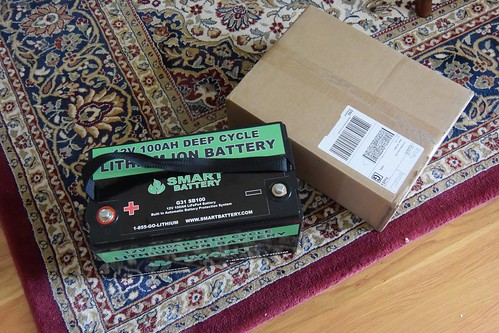
Step 1 was to improve my ramps a bit. I added another layer to give me a couple inches more clearance. The batteries had to be removed with a floor jack since they are so heavy and unwieldily in such a tight space.
So all this had to be unbolted and removed:
So here is what the battery looks like. These are the only markings. The case looks to be a heavy polystyrene, just like a lead-acid or AGM battery and completely sealed - no way to pry it open.
The new converter came well packaged. Surprising how tiny it is.
Here it is out of the box. All the wiring connections are exactly the same as the old converter. All the bolt holes are the same for mounting as well, so no need to drill any new holes.
After the old batteries were removed, it was an easy task to secure the new battery in the old tray and tighten the nuts to hold it in place. Lifting it up into the frame was an easy task, as it was only 28 lbs - no need for the floor jack.
Here it is mounted in place, with all wiring in place. I taped the posts for safety. I also re-installed the pigtail for my portable solar panel, just in case I want to use it.
Under the closet floor is where the converter/charger is housed. The panel just pops out. It looks like a rat's nest, but everything is neatly bundled and there is room around it for cooling. There is an opening in this cabinet into the area under the dinette, for running the other electrical wires as well as give some more space for cooling.
Actually, there was enough slack in the wires, that after I unbolted it from the wall, I could hang it outside the closet and unscrew the connectors holding the pos/neg and grounding cables.
Here you see the new unit bolted in place, all wires connected:
Now with everything complete, I turned on the battery switch to see what I have. Of course, everything came to life on the first try. Below is the voltage I'm reading on the 12v system. A bit higher than I'm used to seeing. Normally you see 12.7-12.8 volts here. Smart Battery told me that the battery would come with about 30-40% charge on it. They also say that they hold 12.8 volts almost all the way to complete discharge. To start, I'm more or less flying blind on what level of charge my battery will have. I will just have to see how it goes for now - I suspect it'll be good for my regular weekend type trips and get fully recharged on the drive home.
Here is the reading with the power turned on and the charger/converter activated. It slowly ramped up from 14.2 to 14.5 volts. I never did see the max of 14.6 volts, but that may be due to the van's interior 12 volt wiring system. Currently, I have no way to read the voltage at the battery. That may be a next project. The charger manual says that if you get 14.3 volts, it is within spec and is OK. The way this charger works, it should hold voltage always, but reduce amperage as the battery gets full. There should be no danger leaving it running, but I probably will not do that. After it's fully charged, I'll hit the battery disconnect switch and turn off the AC power until next time I want to use the van.
Here are the "old" batteries. They need a new home now. Lots of life still in them.
Here is the old converter/charger. It's a good unit. I'll put this on the shelf in case I ever want to go back to the stock install.
That's basically it. Now to do some endurance testing. Smart Battery says you can hammer these batteries. They have 108 AH total capacity and you can draw them all the way down each time between charges. I doubt I'll be that hard on it, but I have the protection of the warranty. The cycle time promises are 3000-5000 cycles, but that is a tremedously long life - not sure I fully buy it. 1000 cycles would be many years of service and I'd be happy with that. Surely there will be bigger and better (and cheaper) in just a few years time.
A final thing to consider. Lithium batteries will work in the cold, but they are not to be charged below freezing. It can damage them. So what I need to figure out going forward, is how warm this battery gets while it's working. It may generate enough heat (while being discharged) to keep itself above that temp. My van is not a 4 season RV anyways, and I rarely go on trips in the winter months. I could install a 12 volt heating pad, but I'm going to hold off on that for now. I store my van in a heated garage, so I'm not concerned about the winter months if I were to leave it on charge. With lithiums, you don't need to leave them plugged in - they will hold their charge for a year or longer, so I could just let her sit from December to March.
So we'll see how it goes. Hope you enjoyed my project. Please leave a question or comment below.
Subscribe to:
Comments (Atom)
